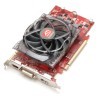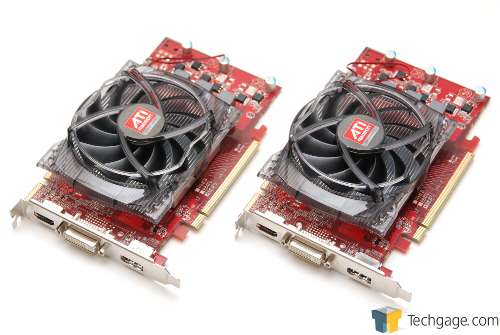- Qualcomm Launches Snapdragon 4 Gen 2 Mobile Platform
- AMD Launches Ryzen PRO 7000 Series Mobile & Desktop Platform
- Intel Launches Sleek Single-Slot Arc Pro A60 Workstation Graphics Card
- NVIDIA Announces Latest Ada Lovelace Additions: GeForce RTX 4060 Ti & RTX 4060
- Maxon Redshift With AMD Radeon GPU Rendering Support Now Available
AMD’s HD 5550 & 5570 – Now Equipped with GDDR5 Goodness

To retain modest pricing, it’s common to see lower-end graphics cards equipped with either DDR2 or DDR3. That design choice, though, can have a major effect on performance, something that’s proven twice over with AMD’s Radeon HD 5550 and HD 5570, both of which have just been upgraded with a move to GDDR5 memory.
Page 9 – Final Thoughts
When AMD first contacted us regarding these GDDR5-upgraded Radeon’s, I can’t say that I got too excited, especially after almost being put to sleep when taking a look at the HD 5550 last month. But, I figured that if AMD is pumped-up about the change, then there might be some good reason for it. After taking a look for myself, I can understand, and agree with, the company’s enthusiasm.
As I mentioned in the introduction, it’s not uncommon to see lower-end graphics cards throttled by the on-board memory, but the results we’ve seen here really emphasize just how much of a “problem” it is. Imagine purchasing an entry-level car and having the engine throttled, resulting in only half of the available horsepower reaching the wheels. The situation with these cards is not much different.
The GDDR5 benefits were impressive from both cards, but even more so with the HD 5550. In some cases, the performance bonus neared 80%, and no matter how you’re looking at things, that’s incredibly impressive. In the overclocking game, you’d have to really push hardware extremely hard to come close to such a gain. Yet, here we have that gain simply thanks to a memory change.
It can be assumed that the HD 5570 didn’t see quite as much of a gain because we hit a point where the memory wasn’t quite as much a bottleneck. Our original HD 5550 sample used DDR2, while the HD 5570 used DDR3. So as it is, the HD 5570 didn’t gain quite as much from the GDDR5 as the HD 5550 did, but either way, the change in general reaped nice rewards.
What I find most interesting about the GDDR5 upgrade is that it resulted in each model nearing the next one up on the chain. For example, equipped with GDDR5 the HD 5550 came very, very close to the performance of the DDR3 HD 5570, and likewise, the updated HD 5570 fell just behind the HD 5670, a card that has always used GDDR5.
The biggest complaint I had with the HD 5550 I took a look at last month was its pricing. Given the performance, the pricing just didn’t scale at all. With the help of this GDDR5, though, the pricing and performance seems to scale a lot better. The HD 5550 acts as a baseline, at around $75, and then there’s the bit-faster HD 5570 at $85, and then the HD 5670 at $100.
At this pricing, I can’t really disagree with the performance scaling. But as I’m sure most of you are aware, it’s a rare day when the quoted pricing is actually what we see on store shelves. For graphics cards, though, the pricing is often even better than what’s quoted, and it takes only a couple of searches to find that out. So as always, don’t buy the first card you see, but look around and make sure you’re getting the best deal. In a quick search, I see many HD 5670’s that are selling for the quoted price of the HD 5570, and likewise, there are likely to be many HD 5570’s priced at HD 5550 levels.
As it is, AMD’s GDDR5-upgraded cards are rather amazing from more than one standpoint. The most important is the fact that these cards are set to cost the exact same as the older models, but offer fantastic performance gains. These cards are almost like a new generation within themselves, just from this “simple” change. If only our PC’s would see such massive gains from simply upgrading our memory!
Discuss this article in our forums!
Have a comment you wish to make on this article? Recommendations? Criticism? Feel free to head over to our related thread and put your words to our virtual paper! There is no requirement to register in order to respond to these threads, but it sure doesn’t hurt!
Support our efforts! With ad revenue at an all-time low for written websites, we're relying more than ever on reader support to help us continue putting so much effort into this type of content. You can support us by becoming a Patron, or by using our Amazon shopping affiliate links listed through our articles. Thanks for your support!






